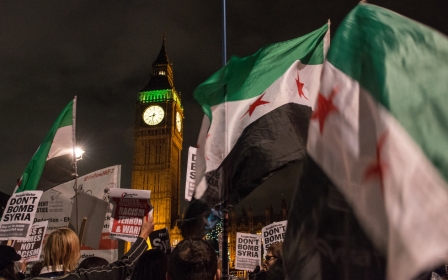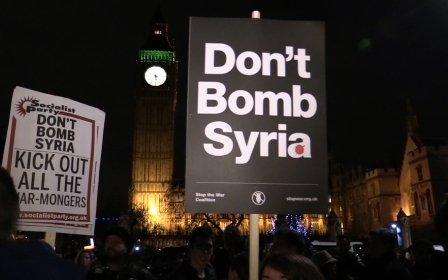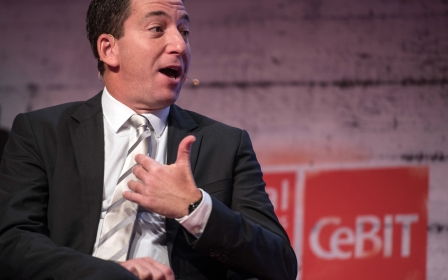Syria/Iraq: Who is doing what in the fight against the Islamic State?

On Wednesday evening, the UK parliament passed a vote to expand airstrikes against the Islamic State in Syria. Within hours of the vote, the Defence Ministry said that four Tornado jets had taken off from Cyprus and carried out airstrikes against IS in Syria, although no details about the raids were released.
The move came after the US announced that it would send an elite team to Iraq to help local forces there.
With the situation continuing to shift rapidly, who exactly is fighting IS in Syria and Iraq, and in what capacity?
Syrian and Iraqi armies
- SYRIA: The Syrian army numbered 178,000 troops in 2015, according to the International Institute for Strategic Studies (IISS). Syria's army has been roughly halved from its pre-war strength by deaths, defections and increased draft dodging. In its fight against opposition groups and militants it additionally relies on militias, which claim to have 150,000 to 200,000 members.
- IRAQ: The army counts 177,600 men, according to the IISS, although others estimates say this is grossly exagerated and that there are only tens of thousands of able bodied fighters. After the US invasion in 2003, US officials dissolved the army, which was then 450,000 strong, but have been trying to rebuild a new force since the Iraqi army's collapse in June 2014 to IS pressure.Washington and its allies have tried to train the Iraqi army, sending in military advisors and special weapons but Iraq has continued to depend heavily on Shia militias, notably the Popular Mobilisation units (Hashed al-Shaabi).
Kurdish forces, rebel militias and foreign fighters
- Kurds have been trying to defend their own territory from the IS, backed by raids by a US-led coalition with Syria's Kurdish People's Protection Units (YPG) in the north and northeastern Syria, and peshmerga in northern Iraq.
- In Syria, after the failure of a plan to train Arab rebel factions, Washington in October stepped up support for a coalition of Kurdish militia and rebel groups known as the Syrian Democratic Forces (SDF).
- Elsewhere in Syria, the armed opposition is fractured between a variety of groups deemed moderate and Islamist by the West, including the powerful Ahrar al-Sham faction in north and northwestern Syria, the Army of Islam near Damascus, and the Southern Front in Daraa province. UK Prime Minister David Cameron has claimed that there are 70,000 "moderate" fighters on the ground who he could cooperate with. Many have questioned the validity of these claims, while supporters of the Conservative prime minister have said that there well could be around 65,000 "moderate" fighters.
Some of those forces, however, have occasionally allied with al-Qaeda affiliate the al-Nusra Front, an IS rival believed to have between 5,000 to 7,000 fighters. With aims and alliances shifting constantly researchers have found it extremely difficult to pin down specific estimates about fighters on the ground.
While Western intelligence believes there are some 31,500 men fighting for IS in Iraq and Syria, a Kurdish commander recently put the figure much higher, claiming there were at least 200,000.
The latest estimates for foreign fighters who have left to fight in Iraq or Syria now exceeds 20,000 – of whom nearly a fifth were residents or nationals of Western European countries, according to King's College London's International Centre for the Study of Radicalisation and Political Violence.
Foreign forces
The US-led international coalition has been conducting air strikes in Iraq since September 2014 at Baghdad's request, and in Syria, although it has publicly refused to collaborate with the Damascus authorities.
The coalition comprises around 60 countries, including Britain, France, Syria's Arab neighbours and Turkey, as well as since late September Tunisia, Malaysia and Nigeria.
It has publicly ruled out putting boots on the ground but has sent soldiers to train Iraqi troops and earlier this week the US announced it would send elite forces to strike IS.
Less than a dozen of the countries actually carry out air strikes, which have totalled 8,300 over the past year, and of which the US has accounted for about 80 percent.
Five countries - the US, France, Canada, Australia and Jordan - have been taking part in air strikes in both Syria and Iraq. Britain will be the sixth.
Others are taking part in strikes in Syria but not Iraq: Saudi Arabia, Bahrain, United Arab Emirates and Turkey, or in Iraq but not Syria: Denmark and the Netherlands.
Washington has also sent the aircraft carrier USS Harry S Truman to the Mediterranean along with 3,500 soldiers to Iraq, and is to deploy at least 200 more special forces troops in both Iraq and Syria.
FRANCE: Stepping up air strikes in Syria after the 13 November attacks in Paris that killed 130 people and were claimed by the IS. It has mobilised 3,500 soldiers, and deployed its flagship aircraft carrier Charles de Gaulle to the eastern Mediterranean, more than tripling its strike capacity.
TURKEY: Launched its first air strikes with the coalition on 28 August. It has authorised the US to use its strategic base at Incirlik and is reportedly in talks with the French and possibly Germans to allow them to use the base as well.
CANADA: Plans to withdraw its combat aircraft but reinforce the 69 special forces troops currently posted in Iraqi Kurdistan.
GERMANY: Has sent around 100 soldiers to train Kurdish troops and is to vote on whether or not to send 1,200 to fight in Syria, notably onboard a frigate that will accompany the Charles de Gaulle, and on refueling and reconnaissance aircraft.
RUSSIA: A key ally of the Damascus government, Moscow began launching air strikes on 30 September in Syria, after boosting its military presence over the summer.
Its fleet in the Caspian Sea has also fired cruise missiles. Moscow is calling for a "large anti-terrorist coalition" and has sent up to 2,000 soldiers to Syria according to the Russian press.
Accused by the US and its allies of targeting the opposition to Damascus rather than the IS, Moscow has stepped up attacks on IS since the violence in Paris and the downing of a Russian plane over Egypt's Sinai desert, although it continues to strike other groups too. Russia, Iran, Syria and Iraq have been sharing intelligence since September.
IRAN: backs the government in Damascus and Baghdad and has committed its elite troops, the Revolutionary Guards, to fight in Syria. In all some 7,000 soldiers have been sent to Syria and Iraq.
LEBANON: The powerful Shia Hezbollah militia has committed between 5,000 and 8,000 fighters to Syria where they operate alongside the army.
Middle East Eye propose une couverture et une analyse indépendantes et incomparables du Moyen-Orient, de l’Afrique du Nord et d’autres régions du monde. Pour en savoir plus sur la reprise de ce contenu et les frais qui s’appliquent, veuillez remplir ce formulaire [en anglais]. Pour en savoir plus sur MEE, cliquez ici [en anglais].




